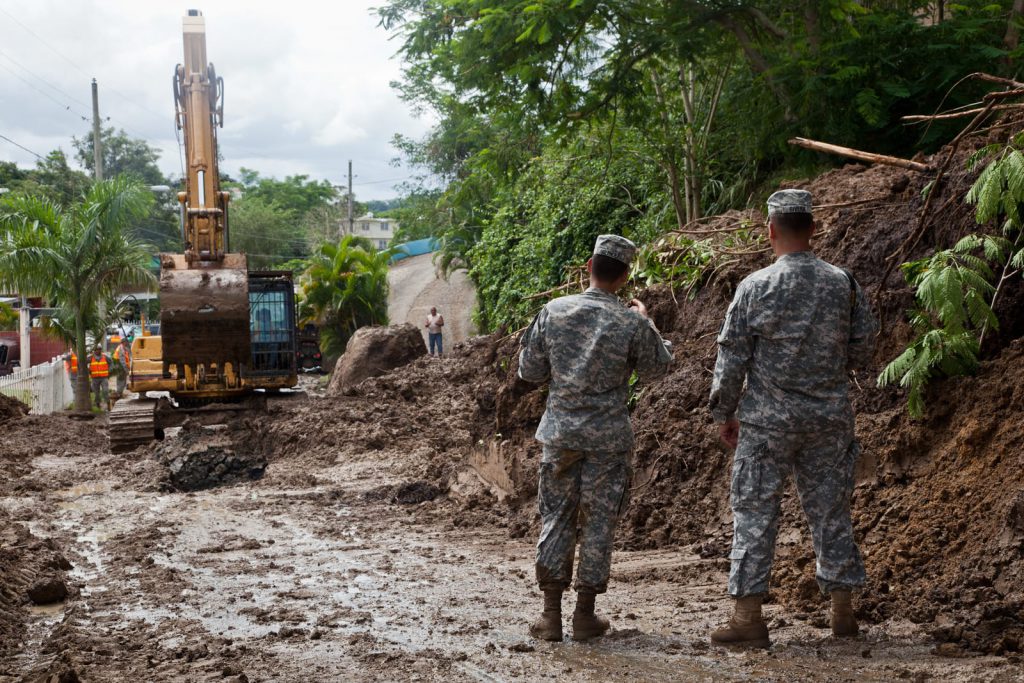
Expat Safety Tips: Mudslides
Although catastrophic, mudslides don’t tend to get as much media attention compared to wildfires, volcanic eruptions, earthquakes and floods. However, just like all other natural disasters, mudslides have the ability to completely dismantle entire villages and towns in the blink of an eye and cause countless fatalities. In recent years one of the most catastrophic mudslides occurred in Uttarakhand (India) in 2013. 80,000 locals were forced from their homes and mudslides and flash floods lead to the deaths of 5,748 people after a torrential monsoon season.
Any mountainous areas in countries worldwide can be at risk of mudslides. Check out the information below on how to react if you are an expat living in an area susceptible to mudslides.
What is a mudslide?
A mudslide is a destructive mass of mud, or any natural material that has fallen down a hillside or other slope. Also known as landslides, they can accompany heavy rains, periods or drought, earthquakes or volcanic eruptions.
What causes a mudslide?
Commonly, mudslides occur when earth is eroded due to the land being saturated with water. This can be due to a storm, heavy rainfall, or rapid snowmelt. The water mixes with the earth, causing it to become a liquid mass and gravity moves it downhill.
Whilst some mudslides can be relatively harmless strews of watery mud, some can be thick dangerous rivers that move at speed. Some mudslides pick up large boulders, trees, cars and small houses on their downward tirade. Mudslides can reach speeds of up to 50 miles per hours.
Mudslides often occur in areas with steep slopes, or at the bottom of canyons. They are common in mountainous areas and can be natural or caused by human actions.
The anatomy of a mudslide
If you ever hear mudslides described by an expert you may hear odd terms such as scrap, shelves and the toe. The scarp is the origin of the mudslide, where it all began. Shelves are created when the mudslide crosses hills or drops, and the toe is where the mudslide finally halts.
Living in a mudslide risk zone
Virtually any region in the world that is mountainous or hilly can experience a mudslide. Volcanic areas, or those most at risk of earthquakes, volcanic eruptions or heavy rainfall are at a higher risk. If you are an expat living in or moving to an area that could be affected by mudslides you should:
- Learn about any evacuation plans or emergency procedures of your town
- Make sure everyone in your home is educated about landslides and what to do
- Have an emergency supply kit prepared
- Bee aware of the land around you whether at work, home or school
- Be aware of how any water drains off mountains, hills and slopes around you
Emergency supply kit
Being prepared for a mudslide is best and you should have an emergency kit ready for you and your family. It should include as a minimum:
- Water
- Wind-up or battery powered radio
- Torch
- N95 masks
- Canned food, dried foods, energy bars
- Can opener
- First aid kit
- Spare sets of house and car keys
- Cash
- Important family documents
- Clothing and blankets
During a mudslide
If your local area is experiencing any severe storms, earthquake or volcanic eruption then you must remain alert. Many people can perish in their own homes when they are sleeping when mudslides unexpectedly collide with their home. Keep an eye or ear on local warnings and leave your home if it is safe to do so.
If you suspect danger, use your ears as well as your eyes. Often mudslides can be detected by unusual sounds such as cracking or knocking noises. Rivers changing from clear to muddy, or water rising rapidly are also signs of a mudslide.
After a mudslide
Stay away from any mudslide areas unless given the all clear by emergency services. Sometimes other mudslides can be provoked. You can help rescuers by scanning areas of mudslide with your eyes and pointing rescuers towards them.
Asses your house, check your neighbours are okay and let family and friend know you are safe. Alert the emergency services if any utility lines are down and hazardous, as well as keeping an eye out for flooding or another mudslide.
